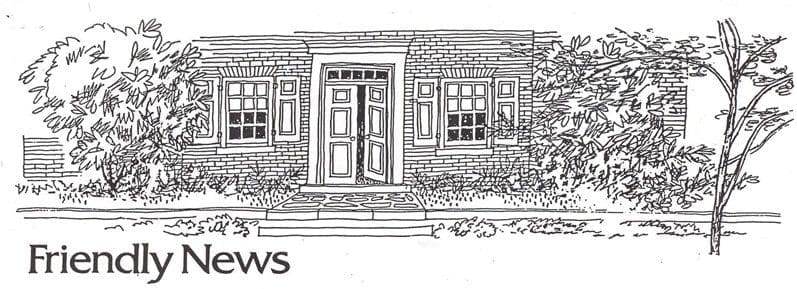Winter 2021
POUGHKEEPSIE FRIENDS MEETING
Poughkeepsiequakers.wordpress.com
Advice offered by New England Yearly Meeting: Attend to the Spirit at work in the ordinary activities and experiences of your daily life. There is inspiration to be found all around us, in the natural world, in the sciences and arts, in our work and friendships, in our sorrows as well as in our joys. Be open to and alert for how the Spirit may be speaking to you in fresh ways, leading you in new directions. • Examine your leadings through a process of discernment to determine whether or not they are grounded in the Spirit. Test your discernment with your faith community. • Be alert to how “way opens.” It may be revealed through a door closing.
Query offered by Britain Yearly Meeting: Are you open to new light, from whatever source it may come? Do you approach new ideas with discernment ?
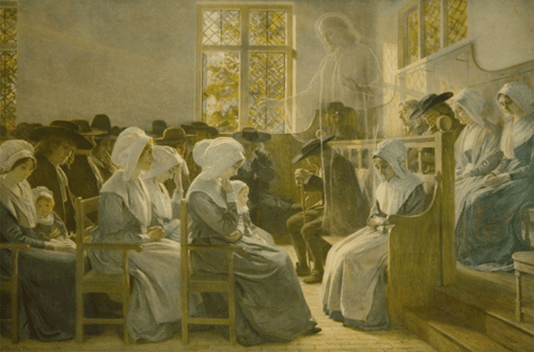
The Presence in the Midst by James Doyle Penrose
“The Quaker discovery and message has always been that God still lives and moves and guides, in vivid immediacy, within the hearts of all people.”
Thomas Kelly.
The Eternal Promise,
CHANGE has become an operative word of the times, within our community as well as the world at large.It is the theme of this first new year edition of Friendly News. The responses and reflections “Change” has inspired are shared here with gratitude. —Friendly News Committee

Don Badgley: trust in the unchangeable
As I consider the changes we are confronting as a faith community, a few things have risen for me that I’d like to share. Most of us don’t like change. The unknown causes us anxiety and stress. Stability, especially the stability of a community such as ours, is comforting.
It has been nearly 100 years since Friends first opened the doors to 249 Hooker Avenue. My father was a teen when his mother, Agnes, brought him and my aunts and uncles to meeting here. They are all departed. Change. Then it was a programmed meeting with more than 100 active members and a paid pastor in the “orthodox” tradition.
That meeting has been gone for more nearly 50 years and the changes that led to our present condition were also stressful. Yet those concerns are but a dim memory for those few still among us who were present for the transition years. I also suspect there was much concern among Friends in the early 1920’s when they decided to build this church for their growing congregation. Change.
Our church building is no longer necessary for our present reality and we have united in selling it. This is a profound change for me and many others. My parents were married in our meeting house. I was married in our meeting house. I and we have said farewell to many dear friends and family within our beautiful brick walls. Our worship here together has been a blessing to me for many years. Yet, change is necessary for our survival and growth. Change.
We are being presented with significant opportunities in this change. We will no longer be tied to real estate that consumes vast resources and energy. Our sojourn at Oakwood will allow us to gather, refocus and center on our future as Poughkeepsie Friends Meeting. Will we build a new meetinghouse? Will we purchase a more appropriate building? Will we be willing to use this change as a way to become more visible in the wider community? Will we become more proactive in our outreach ministries? Will we seek younger families to join us and become the future of the meeting? Will we remove the “bushel basket” that often covers the Light that we claim as our Source and Leader? We shall see. Change.
Change raises myriad questions and it seems to this Friend that change, and the anxieties that often accompany it, are best managed by approaching it with an unwavering trust in the unchangeable. George Fox often used the phrase “that which is eternal.” Our strength will never be found in things “of the world”, certainly not in bricks, doctrine or testimonies, no matter how reassuring they may be. So, instead we turn toward the Light Eternal and in its Presence celebrate the worldly changes we face with the joy of trusting such a simple and profound Truth. Change! How wonderful!
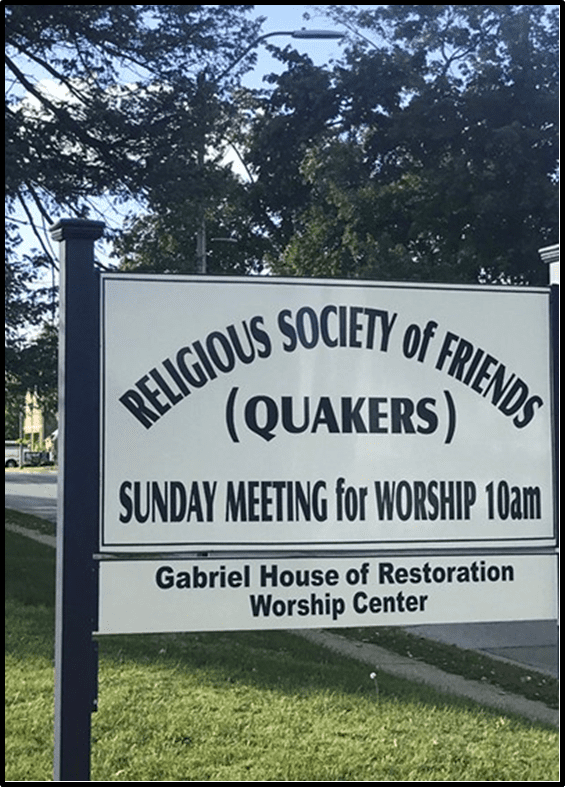
When I first set foot in the Poughkeepsie Meeting House in 1944, the building was only 17 years old – now it is 94. Of course the meeting itself was much older, having moved from downtown Poughkeepsie to the relatively rural eighth ward, an appropriate setting for a pastoral meeting. The changes that have occurred over those years are worth recalling, even if from a child’s perspective, and now, no doubt, clouded by the passage of time. This is a memoir, and as such, is to the best of my recollection.
Poughkeepsie Friends Meeting emerged from the Orthodox Quaker tradition having a pastoral meeting, led in the nineteen-forties by Truman Whittaker. The Sunday school had about 40 children, divided into 6-7 classes.
Attendance was always taken, and those with perfect records werevrecognized on Children’s Day with an additional pendent bar for their attendance pin. Most members at the time lived in the newly developing surroundings, and consisted mainly of married couples with children. The Meeting had a Men’s Club which included many community non-Quakers, and which put on annual Easter ham and Thanksgiving turkey suppers, filling the entire basement with neighborhood people, often with two sittings. There was also a Quaker Maids club, and we had dartball and basketball teams in the Poughkeepsie Church League. The trophy cabinet still hangs in the corner of our dining room. Our members were active in both the quarterly and yearly meetings. As a young lad in Krieger School, I remember coming to the meeting house on Thursday afternoons, when the public schools would allow students to attend religious education classes held by several denominations.

From the late forties into the early sixties, James Stein was Pastor and wife Anne was director of the Sunday school program. As a teenager, I was active in the Young Friends group, which met in the parsonage on Sunday evenings, with up to a dozen youth participating. Part of this activity was a time to prepare us for full membership in the Meeting. I was asked to act as treasurer of the Sunday school which always took up a separate collection. I was now attending the programmed meeting for worship which consisted of scripture readings, hymns, a plate offering, and a sermon followed by a short period of silent worship. Toward the latter part of James Stein’s tenure, he gave more time to silent worship, using it both to center down and afterward for reflection. James Stein came to my graduation from Krieger, where he had to endure, on several levels, my solo performance of “Battle Hymn of the Republic.”
As the Steins departed, there was an increasing interest among new members, in unprogrammed worship, and so a separate, earlier meeting was begun. Some members attended both meetings, the programmed worship then being led by Charles Rich. This was the Vietnam era, and Charles and other young Friends started a Friday evening coffeehouse with impromptu music in our basement. By now, the growing edge of the meeting was on the unprogrammed side, with people like the Fishers, Hathaways, Hartwigs, Paul Pfuetze, McMahons, and the Carrothers bringing new energy to us. We sponsored a Vietnamese refugee family in that time, with Chuck and Grete Carpenter leading the volunteer support team. Our south lawn was then a large community garden, which offered plots where neighborhood residents could tend to their plantings. When Charles Rich left the Meeting, he went on to become the director of Project Gateway, Dutchess County’s first resource for released prisoners.

In the seventies, Rossiter Seward became minister, even though the programmed meeting was declining as long-time members aged or left the area. After Ross suffered a stroke and was unable to continue his ministry, we began a stretch of using supply ministers, and a full year of Paul Pfuetze’s gift of ministry, while the Meeting reached clearness to lay down the programmed meeting. This was a difficult transition for some who had enjoyed the low Protestant form of service, led by a minister. The music committee, the flowers committee, and the ushers were no longer part of the committee structure. To ease this transition, we hired Rachel Ruth, a Quaker and recent graduate of Vassar, to be a Ministering Secretary, a position which M&C envisioned as a combination of ministry, pastoral care, and administrative tasks.
After Rachel left this position, it continued for a few years with service by Anne Carothers, and then Jean Doneit. Paul Pfuetze had enlisted several others to begin a prison worship group at Green Haven.

The eighties and nineties were dynamic years for the Meeting, as Quakers associated with Vassar College, Oakwood School, and IBM came and left as their work took them, and as the last large cohort of young Friends passed through the Meeting. We had done away with our long tradition of Thursday evening monthly meetings, preceded by a pot-luck supper, replacing that with a simpler bag lunch and business meeting following Sunday worship. We continued our long traditions of the Ice Cream social, the prison ministry at Green Haven, Easter breakfasts, the candlelight Christmas service, and the annual outing to cut a Christmas tree, and then decorating it with mittens, hats, and scarves, which were then donated to a social agency. We participated for several years in the Chain of Prayer, and began a long tradition of participating in the community’s annual Crop Walk for hunger. For at least three or four years, we held an annual meeting retreat, at first a full weekend at Powell House, and later a one-day affair held at Bowdoin Park. We held several bargain basement sales, and held “circle suppers” in the homes of meeting members. The business meeting dealt with contentious issues such as hiring an armed watchman during evening hours, when youths would “hang out” on our grounds, smoking, drinking and dealing in drugs. Although we had several gay attenders, we could not reach clearness on celebrating same- sex unions. Our Meeting for Worship continued to be the vital center for our faith community, as we were developing a culture of “every member a minister.”
Our membership rolls had been purposefully pared of many inactive (and consenting) members, because the Yearly Meeting then based its annual assessments on the number of recorded members. We entered the 2000’s with about 60 members, about half of these inactive and remote. We formed an Advancement Committee to bring our message to the wider community. The Paul Pfuetze lecture series ran for 6-7 years, with prominent speakers from the wider Quaker world. We had highway billboard messages one year, and we ran peace ads in local newspapers over two Christmas seasons. These initiatives only raised awareness in our community of the promise and availability of the Quaker way. As the south woodlot became a teen hangout and maintenance burden, we sold that parcel, and used the proceeds to start the Committee Initiatives fund. Unfortunately, as new seekers with children came to try our meeting, we could not retain them without a regular, active first-day school program. When the Center for Prevention of Child Abuse ended their tenancy of the parsonage, we were in the process of selling our property, but after three unsuccessful years, we decided to renovate that building and find a new tenant to sustain us.
Spiritually, we were doing fine, as our worship continued to be rich and vital. We also maintained a lively program of advancement and fellowship: after-meeting coffee hours and Friendly discussions, summer breakfasts, book groups, and Friday night movies. Our aging membership became unable to support our calls for Spring and Fall clean-up days, and we relied on contractors to accomplish many tasks that had formerly been handled by members.
Financially, we had become dependent on renters to subsidize our continuing presence at a property that had been built for over 300 members. Over the years, our meeting house had served as the home for many community organizations: the Mid-Hudson Memorial society, the Duchess Philatelic Society, the HV Gem Society, several smaller congregations, AA meetings and many other informal groups. We had been largely subsidized by the tenancy of the Union College extension center, the Center for Prevention of Child Abuse, the Shir Chadash congregation, the Pirandello Institute and most recently, the homeless shelter program of Hudson River Housing. With onset of the Covid pandemic, Pirandello closed their operation, and without prospect of resuming our own meetings on-site, we decided to return our property to the market, and prepare for a move to Oakwood Friends School. Over the years, we have transformed ourselves to become a Spirit-led faith community, not dependent on a particular leader or physical property.
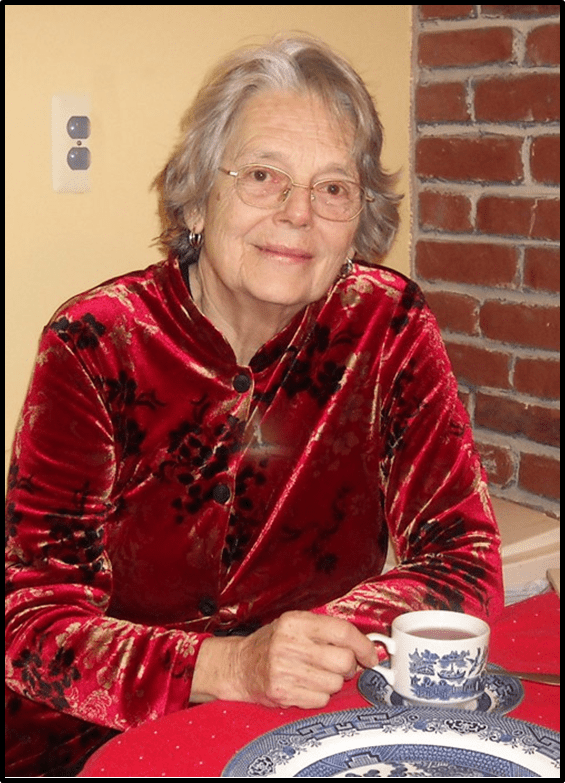

(1.to r.) Louise deLeeuw; Open House: Ann Costello-Rochrohr, Nan Fogel, Kathleen Hart, Fred Doneit; Fellowship Hour: Rosario DiSalvo, Rebecca Ramos, Brook Nam & Pepe
Meeting for Worship.
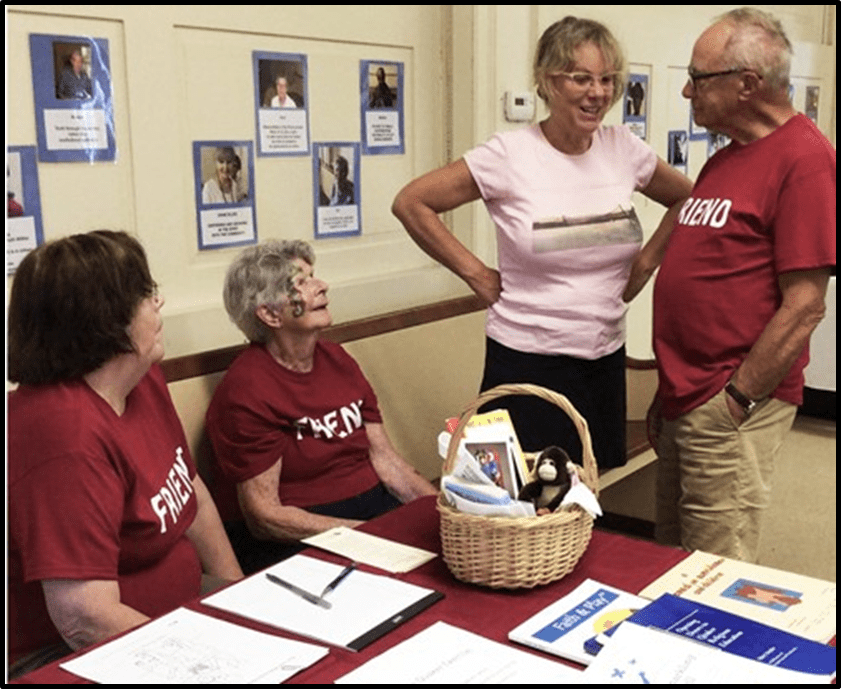

Jennifer Puckett: meetinghouse changes
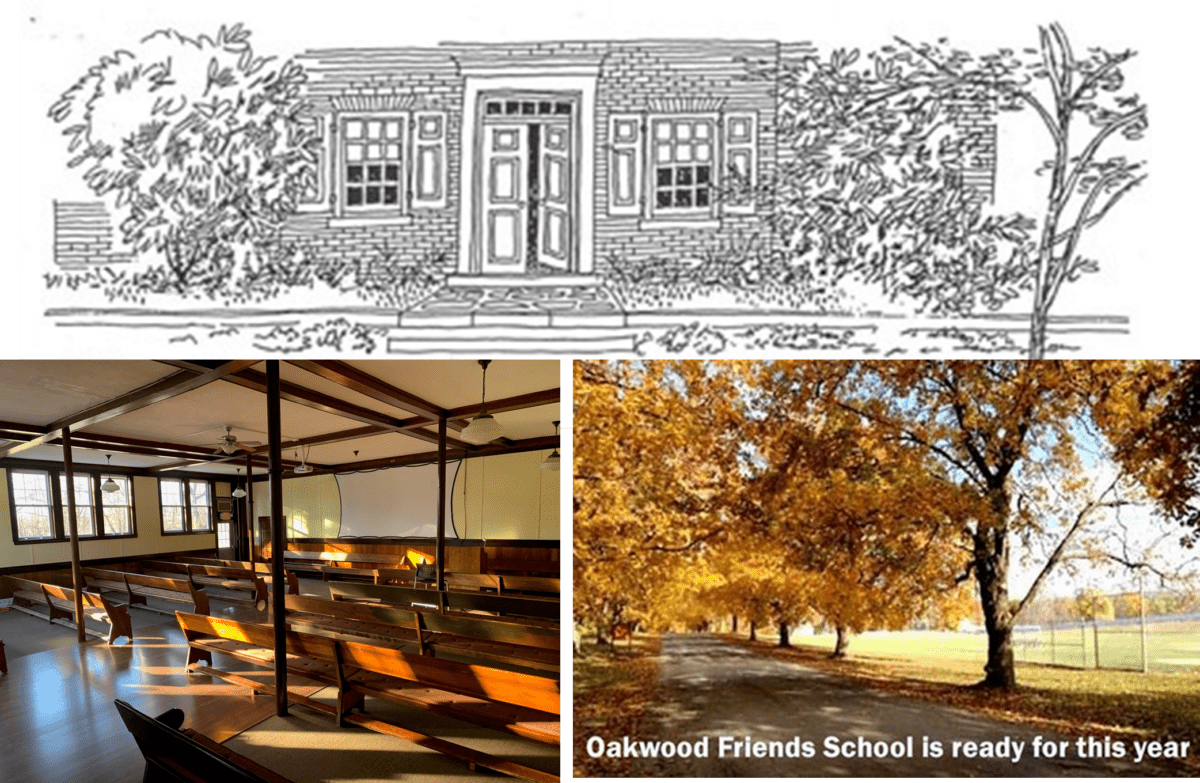
As we ponder the change of selling the existing meetinghouse and a move to a new location for Meeting for Worship, it seemed a good time to reflect on the building we will leave at 249 Hooker Avenue and its unique design and history. Completed in 1928, the Poughkeepsie Friends Meeting House is the last one constructed in Dutchess County.
Friends have been in Dutchess County since the early 18th Century, arriving in Poughkeepsie in 1811. The first Poughkeepsie Meeting House, on Montgomery Street, was built in 1863 and is on the National Register of Historic Places. It housed the meeting for worship until 1927 when it was sold to the Temple Beth El, a local Jewish synagogue.
The Poughkeepsie Friends hired architect Alfred Bussell, who had studied at Haverford College, and was thus versed in Friends traditions. At the time, the Society of Friends was still in the throes of the “great separation”* which began at the Yearly Meeting of 1827-28. In design, the new building would work to heal locally the schism which was not unified nationally until the 1950s. Both the Orthodox and the Hicksite branches were involved in the brief to Mr. Bussell.
During the planning stages, one branch of members suggested that the new building include a steeple, organ and stained-glass windows; the other branch favored a traditional-style meetinghouse. Bussell took suggestions from both sides and fused them into a design that in many ways fused what the Society of Friends was experiencing at the time. The resulting building is a blending of both the Orthodox and Hicksite branches. Another significant change from the Montgomery Street Meeting House is that the Hooker Avenue Meeting House has a single door whereas Montgomery Street had two, one for men and one for women.
Bussell’s design for the Hooker Avenue meeting house is considered a symbol of reconciliation of Dutchess County Friends. In consort with Quakers’ beliefs, it does not include stained-glass windows or ornamentation such as a cross or other symbols.
The meetinghouse’s interior space features seating for 200 people in rows of pews that face the front of the building. The meetinghouse had a full-time pastor until 1979. From 1979 until 1987 the meetinghouse hired a ministering secretary who assumed the business of the meeting and sometimes led the worship with a formal sermon. However, since 1987, the Poughkeepsie Friends returned to the tradition of a silent, unprogrammed meeting, which has limited use of the space with pews. The choice to face the center rather than the front is one of the more unique aspects to a traditional meeting. This half of the building, while not necessary for a unprogrammed meeting, does make the building attractive to a traditional Protestant church as few major structural changes will be required to adapt for this purpose.
Oakwood Friends relocated to Poughkeepsie in the same decade as the design and construction of the Hooker Avenue Meetinghouse. While established in 1796 as Nine Partners School, it was originally outside of Millbrook. The first year it had 100 students. From its beginning, it was a co-educational school, making it the oldest one in the state. Students of note during the early years of the school included abolitionist and suffragist Lucretia Mott and Daniel Anthony, father of Susan B. Anthony.
Land for relocating the school was purchased in Union Spring in 1853 and the school moved in 1857 with the new name Friends Seminary in 1858. In 1876, the name was changed to Oakwood Seminary.
After a fire in 1917, the decision was made to move to the 75-acre Coleman Farm in Poughkeepsie in 1920-21. When the new school opened, there were 112 students, less than half were Friends.
The Oakwood community takes part in Meeting for Worship each week for 30 minutes on Wednesday morning. This silent time of reflection grounds the community, students and faculty alike.
Oakwood Friends School is under the care of New York Yearly Meeting. Students are challenged to put their learning in motion and lead lives of consequence and meaning. The option of meeting at Oakwood Friends is an option that blends the membership of The Society of Friends with young students and their education, something that has been important to Friends since the beginning.
* www.friendsjournal.org/the-great-separation for more information on “The Great Separation”

Sue Jefferson: Quakers and Political and Social Change
Acceptance of political and social change can sometimes be difficult, even for Quakers. A number of early Friends owned enslaved people, most notable among them William Penn. But there were other Friends at that time who took actions against the injustice of slavery. One Friend, Benjamin Lay, used an affrontive, dramatic approach to demonstrate the injustice. Others Friends like John Woolman employed a more gentle but effective way to show slavery’s inhumanity.
Quakers have often been on the frontlines working for change. Examples include the abolition of slavery, women’s suffrage, the Civil Rights Movement and many other peace and justice efforts and environmental causes. Since 1943 Quakers have had an effective vehicle for working for political change through our lobbying organization Friends Committee on National Legislation ( FCNL.org ). Their work is to advance peace, justice and environmental concerns.
This month of January 2021 marks a time when many of us look forward to the political change which we prayerfully hope will begin to heal the deep divisions in our country. Let us all be a part of that healing process, working to create a more Peaceable Kingdom on earth.

Lynne James: living with change
I’ve had three traumatic changes in my life: the early death of both of my parents and the uprooting of my home, the end of a significant relationship, and a diagnosis of cancer. All three of these were sudden and dramatic events. But when I sat down to write something about change for the Friendly News, I thought…surly changes can’t always be bad ? I have had very positive changes, the most eventful of course was giving birth twice and becoming a parent.
To quote the Buddhist teacher Pema Chodron, ” As human beings we share a tendency to scramble for certainty whenever we realize that everything around us is in flux. In difficult times the stress of trying to find solid ground – something predictable and safe to stand on – seems to intensify. But in truth, the very nature of our existence is forever in flux. Everything keeps changing, whether we’re aware of it or not. ” She goes on in her book Living Beautifully With Uncertainty and Change to ask ” How can we make friends with unpredictability and change and embrace them as vehicles to transform our lives? “
What keeps me grounded when it feels like the ground beneath my feet crumbles? A walk in the woods, a conversation with birds, a hug from a tree, a talk with a good friend, music, and Meeting for Worship.
And you, friend – what keeps you grounded during difficult times and big changes ? What is your life raft during instability. ?

Nan Fogel: balancing change
Lynne has asked me to write about change, good or bad, and how I feel about it. For me, moving toArkansas has its perks. It allows me to spend time with family and go to all Zane’s basketball and baseball games. Watching Ruby and Zane grow up is a pleasure.
The place where I live, Butterfield Trail Village, has 400 residents in a mix of housing – mostlyapartments, but some cottages and single-family houses. It has a campus of several acres on a largeproperty at the north end of the city. My own apartment is a little smaller than the one in Poughkeepsie but very nice.
It has a balcony and faces a courtyard that is planted with red roses and trees/bushes that I’ve only seen in the South – crepe myrtle. I was surprised this fall that it was so colorful. I think it’s due to the number of maples and tulip trees. To the south is one of the city’s many hiking trails along Mud Creek. It’s a nice place to walk in any season.
What’s different? Well, they put gravy on everything – white or brown; pansies bloom year-round and people asked me what church I went to even before they knew my name. Sports are big because of the longer seasons and everyone tells me to “just holler” if I need anything. I’m fortunate to have a wonderful Quaker meeting to attend. It was started about fifty years ago by some people from Arkansas University, which has its main campus here in Fayetteville.
What do I miss? You, of course – Friends and friends; the river and the Hudson Valley in general; the Holy Cow ice cream store in Red Hook and upstate Films; being able to go into New York City for a day trip, and all the Adams’ stores.
There are nice people everywhere and I have met some of them here inspite of the Pandemic. I think change depends on how you balance the what’s good and not-so-good. I miss you.

Diane-Ellen McCarron: the little things
Recently, I had a little painting entitled, “I Am Here” selected for a virtual juried art exhibit sponsored by Arts Mid-Hudson (AMH).
The title of the show is “Hope and Ambition”, a theme rising from the question to artists in the Hudson Valley, “What art have you been doing during the challenges of COVID?”
Artists also were invited to give a short gallery talk along with some other participants. I shared some about the origin my watercolor painting which is a sole flower showing up in an unlikely place- a baren, yet shimmering and challenging, dessert environment. In the painting, this little flower in the dessert symbolizes the little surprise encounters one often has in life. These serendipitous experiences nevertheless often carry an embodied and wide significance. Such momentary encounters may breathe transformation of heart and soul. They also may pave the way for new hope for oneself and for earthly beings.Here is the story I shared.
About fifteen years ago, I read the book, An Interrupted Life and the Letters from Westerbork, which serves as a diary of Etty Hillesum. Etty was a Dutch Jew. She first was in a holding camp in Westerbork in Holland and later was annihilated at Auschwitz Concentration Camp at the age of 29. In her diary, Etty describes an experience that she had one day at Westerbork. On that particular day, she was walking the grey cement ground in a barbed wire enclosure at the camp. Her spirits were feeling especially painful from the horrific reality going on around her. She wondered how she could go on. As she walked along, suddenly, there appeared a tiny flower smiling up at her through a crack in the pavement. She had the feeling of falling in love at that very moment. This flower was a gift and message rising from a source much greater than herself. After this miraculous encounter Etty was renewed and ready to commit herself to serving those less fortunate than she was. And this she did until her death.
I do not have a life in any way filled with the agony that Etty experienced in her short life. But, the encounter she described in her journal, really touched my heart. I think of her indelible gift of spirt and love to the world in the most challenging circumstances. That little flower at Westerbork was transformative to her soul and her caring spread to many others as well- helping to assist others to bear things together. Etty’s story urges me to stay awake, to notice the little things, to honor the miracles and hopes that come as surprise. Often they may be Divine messages permeated with abiding Presence waiting to be noticed.
And so, this is the inspiration for my painting, “I Am Here” – reflections of little things in unlikely places and at unlikely times. Many decades later, Etty’s witness still breaths love into life now.
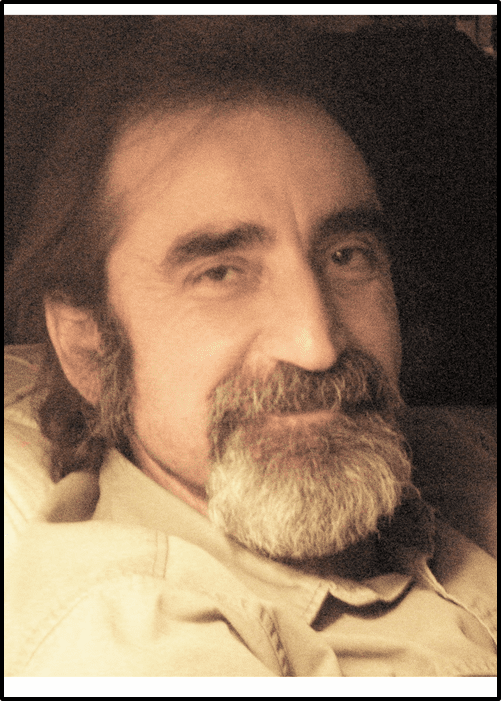
ROSARIO DiSALVO
Interview by Claudia Ansorge
In 1949, when Giuseppe and Giuseppa DiSalvo moved their young family from the small Italian town of S. Giuseppe Jato to live in Palermo, Sicily’s largest city was in ruins. As a strategic shipping port for supplies to North Africa during WWII, Palermo was a prime target for both Allies and Axis heavy air force bombings. According to the 1949 issue of the Treccani Encyclopedia “… 40 % of the pre-war housing stock was lost, leaving 60,000 people homeless in the city center alone.”
For four year old Rosario, the fourth of the five DiSalvo children, the gutted buildings and piles of debris were as familiar as the rosary his Catholic mother recited every day, three times a day. “I felt protected, “ he remembers.” I was never too concerned what the outcome would be. Somehow, whatever I did worked out fine.”
In English, DiSalvo translates as safe, unharmed, unhurt. Rosario means rosary.
By the time Rosario DiSalvo became a member of the Poughkeepsie Friends Meeting in 2016, he knew what safekeeping meant to him and could recognize it when he found it.
Although he honored his mother’s devotion and the Church would have a presence throughout his life, he never accepted the faith and its requirements. But he is thankful to The Order of Salesians, founded by the Italian priest Giovanni Bosco, for giving him a strong foundation. “In Palermo, there were no facilities for kids,” Rosario explains. “I played on the streets and my neighborhood was rough. Without the Salesians, I would have gotten into trouble.”
The organization operated schools, technical and vocational instruction centers, and community shelters for homeless and at-risk youths. Like his older brother Filippo before him, Rosario found a safe place to play, watch movies, go on overnight trips, learn about classical music, be exposed to culture, education and learning—things his parents couldn’t give him at home. His father had been an orphan who went to work when he was seven.
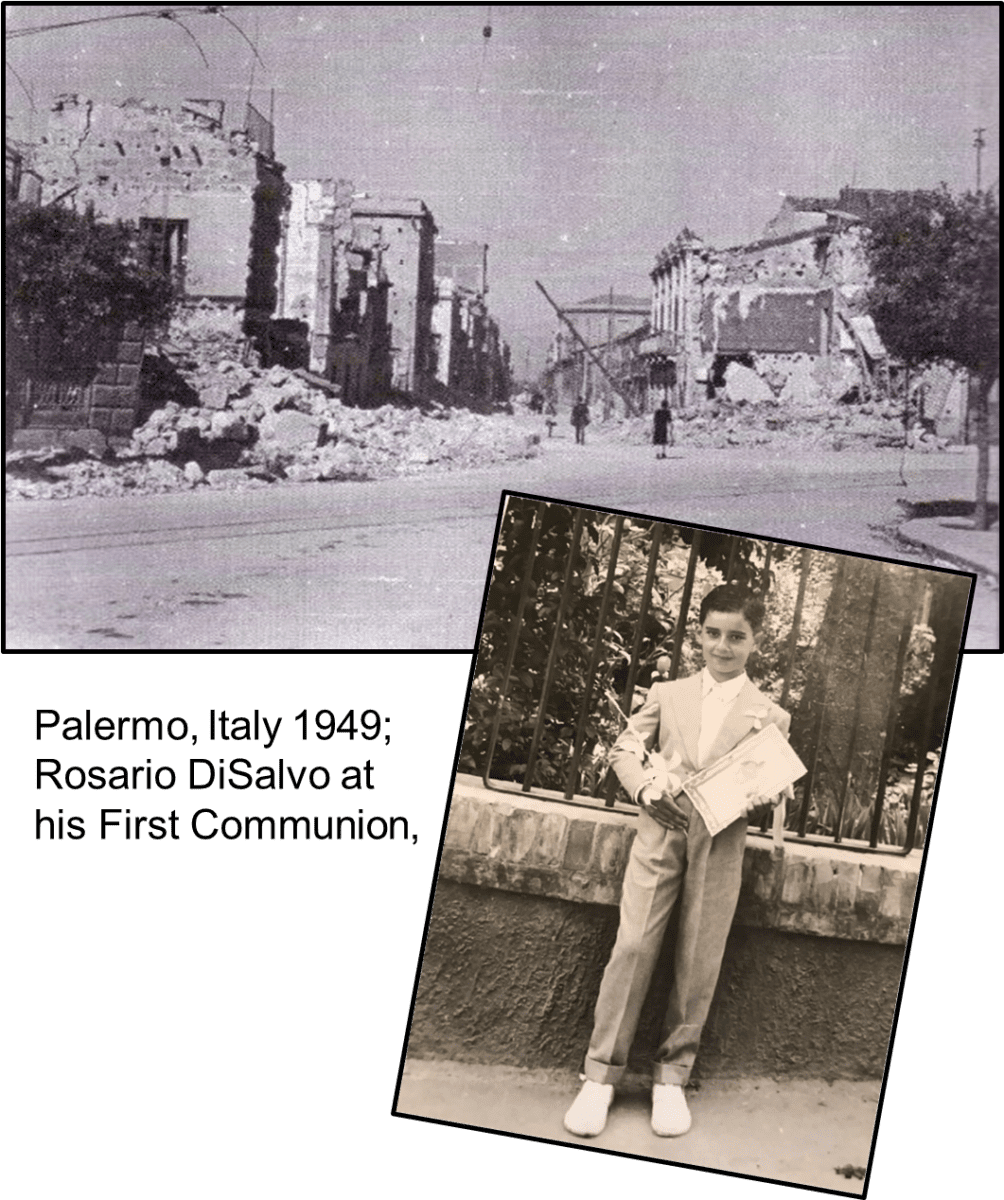
In 1965, when he turned twenty, Rosario left Italy for Canada with a diploma and training as a Land Surveyor. Canada needed skilled European, but once there, he couldn’t work in a technical capacity because he spoke very little English. “I came to Canada by myself with very little money in my pockets,” he recalls. “I found jobs to survive.”
He worked in a cotton mill, a bakery, a fast-food restaurant, a nickel mine and, eventually, an engineering office as a drafter. As soon as his command of the language improved, so did his opportunities. “I worked for the Sudbury Planning Board in Ontario for almost 4 years,” he remembers fondly. “The office was like the United Nations with people from England, Switzerland, Germany, Poland, Turkey…I liked that.”
His parents had come to the States in 1971 with his sister and were living in Brooklyn. Filippo was already here. Rosario left Canada to join them and start his career in telecommunications working with phone companies—the Bell System, AT&T, New York Telephone— first as a draftsman and going on to become an engineer and manager.
In New York, he started reading about meditation and then Buddhism. A book about Transcendental Meditation introduced him to the idea of a personal contemplative practice. He began reading about Buddhism and, after going on a retreat led by the niece of the Zen Master Thich Nhat Hanh, he joined a Sangha. The weekly meditation sessions brought him together in community with other spiritual seekers. “I found it very helpful because I was not asked to believe in Church rules and revelations without question,” he explains. Although the companionship of Quaker silent worship would not come for Rosario until years later, the groundwork had been laid for the experience.
While he was living in Brooklyn, Rosario met his future wife, Margaret, when they were both taking life drawing classes as the Arts Student League in Manhattan on
57th Street. They married in 1976. Margaret Ann was an Episcopalian from a socially prominent family in Scarsdale, New York. Laughing, Rosario asks, “Do you know what Robin Williams called Episcopalians? ‘Catholic, light.’” The description fit their spiritually blended family.
“When I left Italy, I wasn’t going to church any more, “ says Rosario. But I started going to church with Margaret. We’d go to the Catholic Church and sometimes we’d go to the Episcopal Church.”
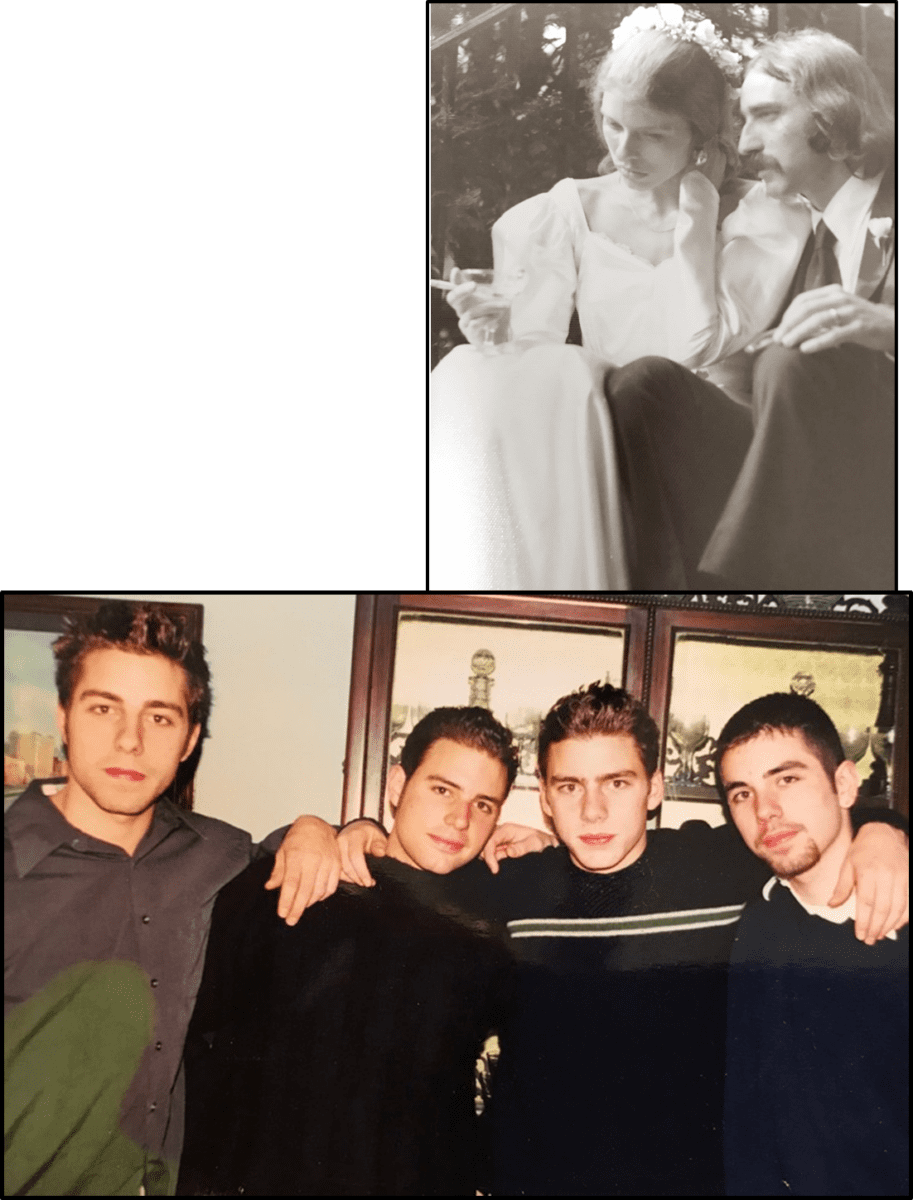
In 1983, when Margaret was pregnant with their fourth son, she was diagnosed with leukemia during a difficult delivery and would die from the disease two years later at the age of 33. Soon after Bryan’s birth, the couple moved their family from Yonkers to live with Margaret’s mother, Peggy, in Scarsdale. Before she died, Margaret asked that their sons— Timothy, Daniel, Joseph and Bryan— be baptized Catholic. “I would take the boys to mass but they got bored,” he explains. “I couldn’t argue with them. I was as bored as they were. We all stopped going.”
When Rosario married in 1987, his second wife, Debbie, had two daughters. It was time to move again, this time to a new a house with seven bedrooms in La Grange. After his divorce nine years later, he stayed in the Poughkeepsie area.
The Friends Meeting House on Hooker Avenue was a building he had noticed on his bike rides around the city. One day he stopped. “I read the word ‘Welcome.’ That put me in the mood to go in,” he recalls. “There was a good energy inside. Nobody was there. I went in a large room for a few minutes and felt a good feeling.” He picked up a pamphlet on Quakerism. “No formulas. No intermediary. A connection between a human being and the Divine…” he remembers reading. “It appealed to me.” A few weeks later, he returned.
Looking back fondly on those early days, he says “I wasn’t planning to join, Louise (deLeeuw) asked me one Sunday ‘Why don’t you become a Member? And I had no reason not to.”
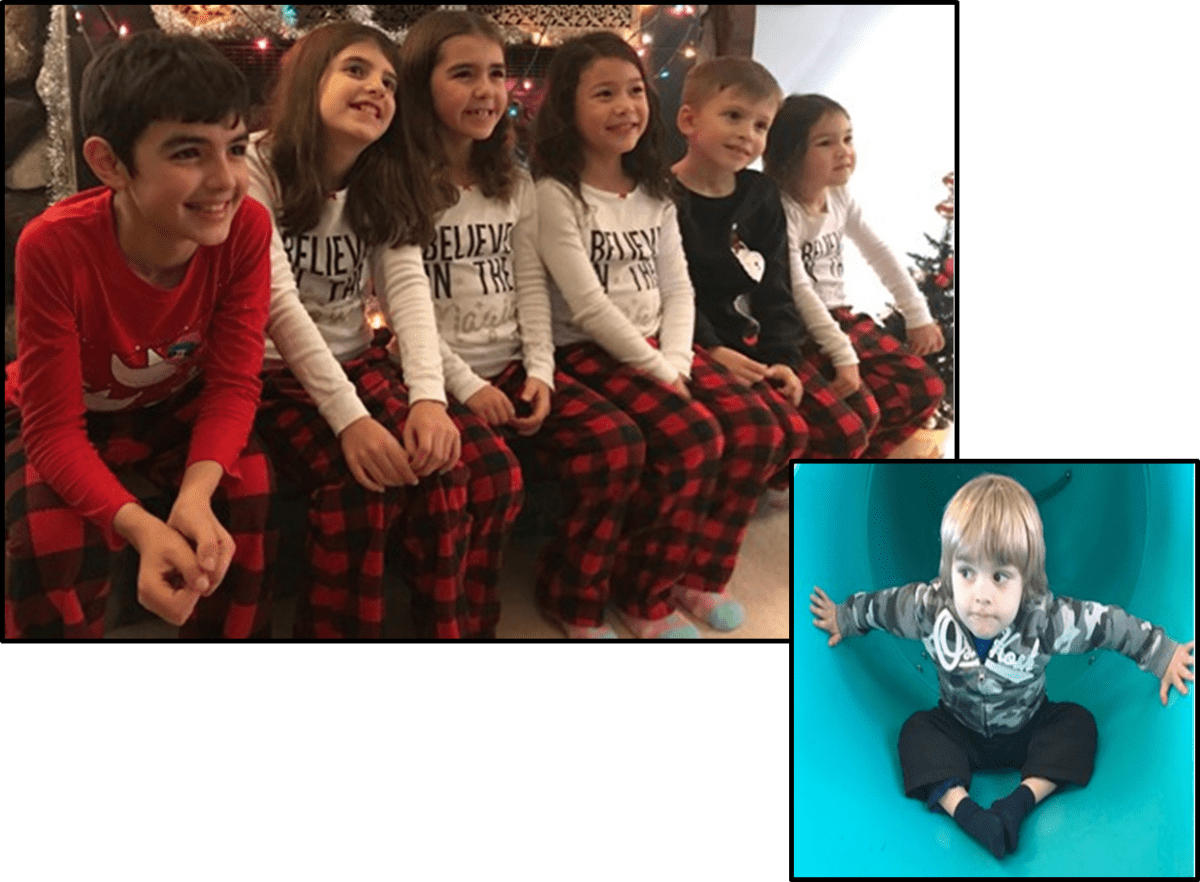
Rosario’s youngest son, Bryan, died in 2017. He had already lost two brothers, Gaetano and Filippo, his father, his mother and his youngest sister, Nancy. “Being a husband, a widower, a divorced man, father and grandfather have been the most significant experiences in my life. Wondering why things are the way they are is the question that always resides in my mind. What attracted me to the Religious Society of Friends was the belief that we ought to try to be gentle with each other and nature, that God is present always and everywhere.”
When asked if being a Quaker had changed how he deals with life, he doesn’t hesitate giving his answer. “Yes, “ he says. “I am trying to be a better listener.
ELIZA FICHTER
Although her father had been brought as a Quaker in Ohio, Eliza Fichter had never been to a Quaker meeting before attending her first virtual Poughkeepsie Friends Meeting on Zoom last year from her new home in Beacon where she had moved in March 2020. The pandemic had radically changed her plan to go to New York City to start a job in theater. Originally from Cambridge, Massachusetts, Eliza graduated from Boston University with a concentration in Women’s Studies and went on to Harvard University for graduate work in arts and education.

As an artist, actor and educator, Eliza’s art and work have explored mortality, the end-of-life, and the role women have played in that experience. In graduate school, she wound up crafting a curriculum for high school dealing with death education.
Reflecting on what brought her to a Friends Meeting, she says it wasn’t faith: “I wasn’t directly, overtly interested in faith and tradition, but I had a yearning to connect spiritually — the connection between humans, and the earth, and the unknown.” Although she never knew her Quaker grandparents, she wanted to connect to her roots and, at 31 herself, be with people her grandparents’ age: “I wanted to be with elders who’ve lived full lives in terms of age and who have done the deep work that I—and people of all ages— have to do. They have so much wisdom to give.” And the silence: “Something made me want to be in silence with other living and breathing humans.”

